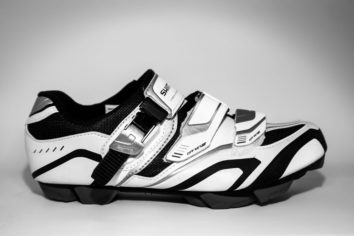Tour de France Winners: A Legendary Journey through History

Introduction:
Tour de France winners hold a special place in the hearts of sports and leisure enthusiasts around the world. This prestigious cycling event, known for its grueling routes and breathtaking landscapes, has captivated audiences for over a century. In this article, we will delve into the world of Tour de France winners, exploring their significance and providing an in-depth historical overview of this iconic race.
Understanding Tour de France Winners:

For those unfamiliar with the Tour de France, it is an annual multi-stage race featuring professional cyclists from various countries. The event spans three weeks, covering thousands of kilometers through picturesque French terrain. Over the years, the Tour de France has become synonymous with determination, endurance, and athletic prowess.
Aspirants to the Yellow Jersey:
The ultimate goal of every cyclist participating in the Tour de France is to claim the coveted Yellow Jersey, symbolizing the overall race leader. The race is divided into different stages, including flat terrains, mountainous routes, and time trials. Each stage winner is awarded a distinct jersey, but the Yellow Jersey holds the highest honor.
Historical Evolution of Tour de France Winners:
Since its inception in 1903, the Tour de France has witnessed remarkable developments, both in terms of its route and the winners who have etched their names in cycling history. Let us take a journey through time and explore the significant milestones:
Early Years and Pioneers (1903-1919):
– The inaugural edition of the Tour de France took place in 1903, with 60 ambitious cyclists embarking on a six-stage race. The winner, Maurice Garin, set an impressive precedent.
– Lucien Petit-Breton and Octave Lapize emerged as dominant forces, showcasing unmatched skills during this period.
The Golden Era (1920-1939):
– The 1920s witnessed the rise of legendary cyclists such as Philippe Thys and Nicolas Frantz, who amassed multiple victories.
– This era also introduced the famous mountain stages, adding an exhilarating twist to the race.
– Despite the challenges posed by World War I and economic crises, the Tour de France managed to persist, bolstered by the unwavering support of cycling enthusiasts.
Challenges and Triumphs (1940-1959):
– The outbreak of World War II suspended the Tour de France, but it made a triumphant return in 1947.
– Gino Bartali and Fausto Coppi engaged in an intense rivalry, captivating audiences with their remarkable performances.
– The 1950s introduced the concept of team tactics, reshaping the dynamic of the race and providing a platform for emerging talents.
Modern Era and International Dominance (1960-Present):
– The Tour de France transformed into a global spectacle, attracting renowned cyclists from various countries.
– Eddy Merckx, Bernard Hinault, and Miguel Indurain emerged as dominant figures, showcasing their excellence year after year.
– The late 1990s and early 2000s were marred by doping scandals, tarnishing the reputation of some winners. However, anti-doping measures have since been implemented to ensure fairness and integrity.
Featured Snippet Bulletpoints:
– Evolution of Tour de France winners
– Importance of the Yellow Jersey
– Pioneers and early winners: Maurice Garin, Lucien Petit-Breton, & Octave Lapize
– Golden era champions: Philippe Thys & Nicolas Frantz
– Challenges and triumphs during World War II and beyond
– Rivalry between Gino Bartali and Fausto Coppi
– Introduction of team tactics in the 1950s
– Modern dominant cyclists: Eddy Merckx, Bernard Hinault, & Miguel Indurain
– Doping scandals and anti-doping measures
Conclusion:
Tour de France winners epitomize the true spirit of cycling, pushing the boundaries of physical and mental endurance. From the early pioneers to the modern-day champions, these athletes have left an indelible mark on the world of sports. As the Tour de France continues its illustrious journey, we eagerly await the next generation of winners who will inspire and captivate us with their extraordinary feats of athleticism.
FAQ
What does the Yellow Jersey signify in the Tour de France?
Who were the early pioneers and winners of the Tour de France?
Has the Tour de France been affected by doping scandals?
Flere Nyheder
Pokaler Odense: En guide til at vælge rette pokaler i Odense
Introduction: Tour de France winners hold a special place in the hearts of sports and leisure enthusiasts around the world. This prestigious cycling event, known for its grueling routes and breathtaking landscapes, has captivated audiences for over a...
07 marts 2025
Ultimate guide til at vælge de rigtige ishockeyskøjter
Introduction: Tour de France winners hold a special place in the hearts of sports and leisure enthusiasts around the world. This prestigious cycling event, known for its grueling routes and breathtaking landscapes, has captivated audiences for over a...
07 juli 2024
Tour de France Start: En Historisk og Dybdegående Gennemgang
Introduction: Tour de France winners hold a special place in the hearts of sports and leisure enthusiasts around the world. This prestigious cycling event, known for its grueling routes and breathtaking landscapes, has captivated audiences for over a...
18 januar 2024
Tour de France Standings: A Deep Dive into the Premier Cycling Event
Introduction: Tour de France winners hold a special place in the hearts of sports and leisure enthusiasts around the world. This prestigious cycling event, known for its grueling routes and breathtaking landscapes, has captivated audiences for over a...
18 januar 2024











